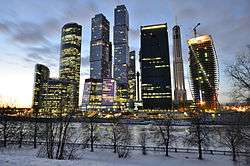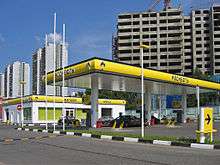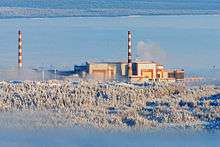Monetary reform in the Soviet Union, 1991
Monetary reform of 1991 (known also as Pavlov Reform) was the last of such in the Soviet Union. The reform had a confiscatory character. It began on January 22, 1991. Its architect was Minister of Finance Valentin Pavlov, who was to became the last prime minister of the Soviet Union.
Overview
22 January 1991 President of the USSR Mikhail Gorbachev signed a decree on withdrawal from circulation and retirement of the 50- and 100-ruble banknotes of then-current 1961 issue.
The signing of the Decree was reported on television at 21:00 pm Moscow time same day. By that time, virtually all financial institutions and shops were closed for the day. In the next few hours, the most "resourceful" people managed to exchange their 50 - and 100-ruble banknotes at institutions that were open late, like subway and railway stations and in taxis as many cashiers and taxi drivers were not aware of the news.
Some were able to send large remittances at late-open post offices, at railway stations, working 24 hours to relatives or to themselves. Some managed to purchase advance rail and air tickets and pay with 50 - and 100-ruble banknotes with an intention to return then for refund in other banknotes.
The reform included provision for the 50- and 100-ruble banknotes of 1961 standard to be redeemable for exchange in LIMITED quantities per person or family through workplace-organized exchange locations to smaller-denomination banknotes or to new-issue (1991) bills of 50 and 100 rubles denomination.
The exchange was a subject to significant limitations:
- Deadlines for exchange – for three days from 23 to 25 January (Wednesday to Friday).
- No more than 1,000 rubles per person − additional exchange was to be requested as an exception for consideration by a special commissions till the end of March 1991.
However, actual exchange was also limited by the amount of cash available to exchange locations. Withdrawal at the "Savings Bank of the USSR" - the only consumer bank in USSR was also limited to no more than 500 rubles per month per depositor.
In reality, deposits in several savings banks, including those in different cities, were allowed and common. As there was no technical way to link different accounts, an ad-hoc decision was made to make notes of withdrawals on the last pages of passport, where bank's officers made a mark of the amounts withdrawn from the deposit.
Results
Government plans succeeded only in part, and had tremendous negative effect: confiscatory procedure allowed to withdraw from circulation 14 billion rubles in cash, but the surprise attack (or reform?) which intended to help in the fight against "speculation", "unearned" income, counterfeiting, "smuggling" and corruption, resulted in a loss of public confidence in the government's actions.
Unpopular "shock therapy" reforms in the Soviet Union under the leadership of Pavlov continued.
On April 2, just as suddenly, consumer prices (then controlled by government) increased about 3-fold, cash dried up and so many daily wage workers lost their jobs, Soviet Union crashed miserably and got separated into different nations.


